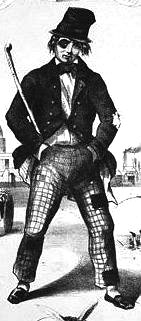Venue Type & Location
Overview
Address: 83 Victoria Street
In the early decades of the 20th century, the name “Shea” was synonymous with theatre excellence. The name referred to two brothers, Jeremiah (Jerry) and Michael Shea, born in St. Catherines, Ontario. Enterprising by nature, they realized the potential of the new entertainment medium,“moving pictures.” In 1903, they rented space at 91 Yonge Street and opened a small theatre, on the east side of the street, between King and Adelaide Streets. The theatre screened silent films, accompanied by vaudeville acts. The vaudeville’s slap-stick routines and comedians had always been popular, but it became obvious that the real attraction was now the “moving picture” shows. Films in this decade were not as lengthy as today, so vaudeville routines were necessary if the Shea brother were to offer a performance that justified the five-cent admission price. The Shea’s Theatre on Yonge Street was an immediate success. With the funds they accumulated, in 1910, they decided to open a larger and grander theatre.
The Shea brothers chose a site at 83 Victoria Street, on the southeast corner of Richmond and Victoria Streets. They engaged the architect Charles James Reid to design their theatre. In 1908, Reid had been appointed the official architect of the Roman Catholic Separate School Board in Toronto, and between the years 1910 and 1920, he designed many school throughout the city. He was also the architect of the York Theatre on Yonge Street, north of Bloor. Reid chose an unadorned facade for the new Shea’s theatre, with an elaborate cornice and beneath it, modillions that resembled large dentils. The design of the facade facing Victoria Street was symmetrical, except for the ground floor, where there was a door to the right of the entrance. A plain rectangular canopy over the entrance protected patrons from inclement weather as they alighted from cabs and carriages or entered on foot.
Determined to offer the best vaudeville and legitimate theatre in the city, the Shea brothers competed with the Princess and Royal Alexandra Theatres on King Street. In some respects this was not accurate, as the latter two theatres did not offer vaudeville. However, the Shea brothers did compete for popular touring plays. Shea’s Victoria, which was simply referred to as the Victoria, contained two balconies, the combined seating capacity approximately 1800 seats, of which 700 were on the ground-floor level. The projection booth was at the rear of the second balcony. A 1909 issue of Construction Magazine, a highly respected periodical, gave the theatre a positive review for its architectural design.
Despite the increasing popularity of films, the Victoria continued to offer live theatre. Barry Jones, a famous British film star in the 1920s, performed at the Victoria in 1926. In later years, Jones played Aristotle in the film “Alexander the Great.” This movie was released 1956, Richard Burton playing the role of Alexander. Jones retained fond memories of the Victoria, but stated that the Royal Alexandra was the finest theatre of them all. On April 16, 1936, “Ten Minute Alibi,” a smash hit from London’s West End, where it had played for two years, opened at the Victoria. It was one of many road shows performed at the theatre. These shows usually played between one and eight weeks, depending on ticket sales. Eventually, Famous Players purchased the theatre.
When vaudeville died, the Victoria closed. Though empty, it was employed for special events and for charity fund-raisers, such as those for Crippled Children’s. Jewish stage plays were also performed in the theatre. Since it was not in continuous use, during the early years of World War II, big-name theatrical acts rehearsed at the Victoria prior to being shipped overseas to entertain the troops.
About the year 1944, Famous Players submitted a request for a license to convert the theatre exclusively for movies. The license was granted on December 3, 1945, the capacity listed as 1896 seats. However, difficulties with the licensing authorities continued as the top balcony did not contain proper exists, the aisles blocking the escape route. The authorities ordered the upper balcony closed. In 1947, with a reduction in seating capacity to 1260, another licence was issued. The same year, a candy bar was installed. During the summer of 1949, the theatre closed for renovations. It received new seating and a new floor in the auditorium. These were completed by January 1950.
The newly renovated Victoria continued as one of Toronto’s largest movie theatres. However, as attendance declined, the theatre’s size made it difficult to fill. No longer profitable, it was demolished in April 1956 by the wrecking company of A. Badali, and the site became a parking lot. Another of the city’s great theatres of yesteryears disappeared from the scene.
"Toronto's old Shea's Victoria Theatre" Historic Toronto. tayloronhistory.com/2015/04/17/torontos-old-sheas-victoria-theatre/
